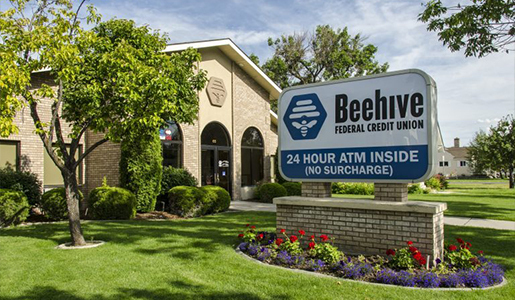Member Service: (208) 656-1000
Toll Free: (800) 972-4483
Investing
for Your Future
Investing
for Your Future
Investments We Offer
Find the Right Fit for You
Traditional IRA
An Individual Retirement Account is an account that allows you to save money for retirement. IRAs are available to most people. The money you save grows tax deferred, meaning you will not have to pay taxes until you retire and withdraw money from the account. An IRA is a great way to save for retirement because of the flexibility in making contributions and the wide range of investments that are available. Just like most retirement accounts, what your money is invested in is determined by you.

Investments We Offer
Find the Right Fit for You

Traditional IRA
An Individual Retirement Account is an account that allows you to save money for retirement. IRAs are available to most people. The money you save grows tax deferred, meaning you will not have to pay taxes until you retire and withdraw money from the account. An IRA is a great way to save for retirement because of the flexibility in making contributions and the wide range of investments that are available. Just like most retirement accounts, what your money is invested in is determined by you.

Roth IRA
A Roth IRA is very similar to a traditional IRA; however the biggest difference is that the money you contribute is post tax dollars. This means that the income you are using to contribute has been taxed in the year that you make the contribution.
Your investments will grow tax free and at retirement you won’t have to worry about what the tax rates are, because using a Roth IRA you paid your taxes when you made the contributions.

Roth IRA
A Roth IRA is very similar to a traditional IRA; however the biggest difference is that the money you contribute is post tax dollars. This means that the income you are using to contribute has been taxed in the year that you make the contribution.
Your investments will grow tax free and at retirement you won’t have to worry about what the tax rates are, because using a Roth IRA you paid your taxes when you made the contributions.
Certificates
Certificates are a simple way of investing your savings. You agree to keep a certain amount of money in an account for a certain amount of time and are rewarded with a higher rate of return than our savings accounts.


Certificates
Certificates are a simple way of investing your savings. You agree to keep a certain amount of money in an account for a certain amount of time and are rewarded with a higher rate of return than our savings accounts.
Our Branches
Address
Phone
Services
Hours
1650 E Sunnyside Rd, Idaho Falls, ID 83404
Branch, ATM
Lobby:
9:00am - 5:00pm Mon-Thur
9:00am - 6:00pm Fri
Drive-Through:
8:30am-5:30pm Mon-Thur
8:30am - 6:00pm Fri
Address
Phone
Services
Hours
250 S State St, Rigby, ID 83442
Branch, ATM
Lobby:
9:00am - 5:00pm Mon-Thur
9:00am - 6:00pm Fri
Drive-Through:
8:30am-5:30pm Mon-Thur
8:30am - 6:00pm Fri
Address
Phone
Services
Hours
220 E. Moody Road, Rexburg, Idaho 83440
Branch, ATM
Lobby:
9:00am - 5:00pm Mon-Thur
9:00am - 6:00pm Fri
Drive-Through:
8:30am-5:30pm Mon-Thur
8:30am - 6:00pm Fri
Address
Phone
Services
Hours
1087 Erikson Drive, Rexburg, ID, 83440
Branch, ATM
Lobby:
9:00am - 5:00pm Mon-Thur
9:00am - 6:00pm Fri
Drive-Through:
8:30am-5:30pm Mon-Thur
8:30am - 6:00pm Fri
Address
Phone
Services
Hours
65 S Center St, Rexburg, ID 83440
Branch, ATM
Lobby:
9:00am - 5:00pm Mon-Thur
9:00am - 6:00pm Fri
Drive-Through:
8:30am-5:30pm Mon-Thur
8:30am - 6:00pm Fri
Address
Phone
Services
Hours
5968 N. Linder Rd., Meridian, ID 83646
Branch, ATM
Lobby:
9:00am - 5:00pm Mon-Thur
9:00am - 6:00pm Fri
Drive-Through:
8:30am-5:30pm Mon-Thur
8:30am - 6:00pm Fri
Our Branches
Idaho Falls

Address 1650 E Sunnyside Rd, Idaho Falls, ID 83404
Phone (208) 528-6767
Services Branch, ATM
Lobby:
9:00am - 5:00pm Mon-Thur
9:00am - 6:00pm Fri
Drive-Through:
8:30am-5:30pm Mon-Thur
8:30am - 6:00pm Fri
Rigby

Address 250 S State St, Rigby, ID 83442
Phone (208) 745-1011
Services Branch, ATM
Lobby:
9:00am - 5:00pm Mon-Thur
9:00am - 6:00pm Fri
Drive-Through:
8:30am-5:30pm Mon-Thur
8:30am - 6:00pm Fri
North Rexburg
Address 220 E. Moody Road, Rexburg, Idaho 83440
Phone (208) 656-1000
Services Branch, ATM
Lobby:
9:00am - 5:00pm Mon-Thur
9:00am - 6:00pm Fri
Drive-Through:
8:30am-5:30pm Mon-Thur
8:30am - 6:00pm Fri
Rexburg West

Address 1087 Erikson Drive, Rexburg, ID, 83440
Phone (208) 656-1000
Services Branch, ATM
Lobby:
9:00am - 5:00pm Mon-Thur
9:00am - 6:00pm Fri
Drive-Through:
8:30am-5:30pm Mon-Thur
8:30am - 6:00pm Fri

ATM and Shared Branches Locations
Anywhere you go, you have access with Beehive
Beehive members are not charged a fee by Beehive for using other institutions’ ATMs. Keep in mind that if you use a card from another institution in our ATMs, that institution may assess a fee.



